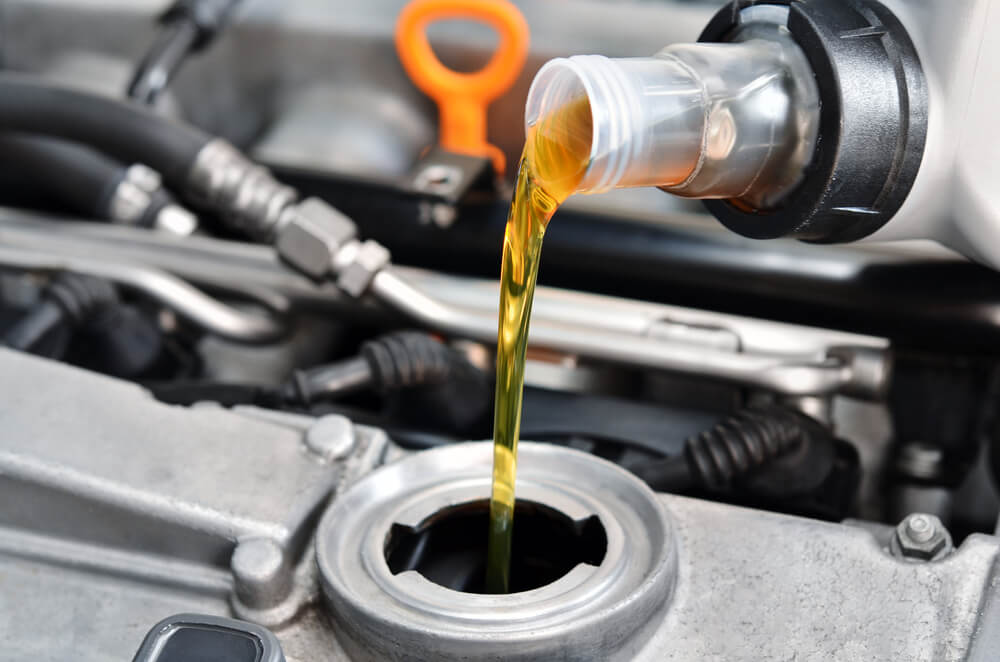Title: “Is Motor Oil Bad for Your Skin? Exploring the Risks and Precautions”
Introduction:
In our daily lives, we often encounter substances that, while indispensable in certain applications, can pose risks when they come into contact with our skin. Motor oil is one such ubiquitous substance, found in nearly every vehicle and many industrial applications. While it serves a critical purpose in engines and machinery, the question lingers: Is motor oil bad for your skin?
In this blog, we embark on a journey to explore the potential hazards of motor oil exposure to the skin, understanding the chemical composition, associated risks, and, most importantly, how to protect ourselves from its detrimental effects. By shedding light on the dangers and offering guidance on safety precautions, we aim to equip you with the knowledge needed to stay safe and informed in your daily interactions with this common industrial substance.
Risks of Motor Oil Exposure to the Skin: Understanding the Hazards
Motor oil, a vital lubricant for the smooth operation of engines and machinery, can be a double-edged sword when it comes to skin contact. While it is an essential component for vehicles and industrial equipment, it can also pose several significant risks when it encounters the skin. Understanding these hazards is crucial to take the necessary precautions and ensure your safety. Let’s delve into the potential risks associated with motor oil exposure to the skin:
- Chemical Composition: Motor oil consists of a complex mixture of chemicals, including hydrocarbons, additives, and sometimes contaminants like heavy metals. These substances can be harmful when they come into direct contact with your skin.
- Irritation: Motor oil is known to cause skin irritation. Prolonged or repeated exposure can lead to redness, itching, and discomfort. It may also exacerbate existing skin conditions like eczema or dermatitis.
- Skin Absorption: Some of the compounds in motor oil can be absorbed through the skin. This can result in systemic effects, as these substances may enter the bloodstream and affect internal organs.
- Chemical Burns: In more severe cases of exposure, motor oil can lead to chemical burns. These burns can be painful, cause blistering, and require immediate medical attention.
- Allergic Reactions: Some individuals may develop allergic reactions to the components in motor oil, which can manifest as hives, rashes, or even respiratory issues in extreme cases.
- Carcinogenic Compounds: Motor oil may contain carcinogenic substances, such as polycyclic aromatic hydrocarbons (PAHs). Prolonged skin contact with these substances can increase the risk of cancer over time.
- Dermatitis: Contact dermatitis is a common skin condition resulting from exposure to motor oil. It can cause red, itchy, and inflamed skin, and its effects may persist for an extended period.
- Prolonged Exposure Effects: Long-term or repeated contact with motor oil can have cumulative effects on the skin. Over time, the risk of developing chronic skin conditions and allergies may increase.
To mitigate these risks, it’s essential to take precautions when working with motor oil. Protective clothing, such as gloves and coveralls, can serve as a barrier between your skin and the oil. Additionally, prompt action in case of contact, including thorough washing with soap and water, can help minimize the risk of adverse effects.
Immediate Actions After Skin Contact with Motor Oil: Ensuring Safety
Accidents can happen, and in the event of skin contact with motor oil, swift and appropriate action is essential to minimize the potential risks and adverse effects. Motor oil, with its complex chemical composition, can be harmful when it comes into contact with your skin. Knowing what to do immediately after such contact is crucial. Here are the recommended steps to take:
- Remove Contaminated Clothing: If motor oil has come into contact with your clothing, remove it as quickly as possible. The goal is to minimize skin exposure and prevent the oil from spreading to other areas.
- Wash with Soap and Water: Immediately rinse the affected skin with copious amounts of soap and water. Use a mild soap to thoroughly clean the area. The soap helps break down the oil and allows it to be washed away.
- Do Not Use Solvents: Avoid using solvents, gasoline, or other harsh chemicals to remove the oil from your skin. These substances can further irritate the skin and should be used only by professionals in controlled environments.
- Do Not Use Hot Water: Use lukewarm water for rinsing. Hot water can open pores and potentially allow the oil to penetrate deeper into the skin.
- Gently Pat Dry: After rinsing, gently pat the affected area dry with a clean, soft towel. Avoid rubbing, as this can irritate the skin further.
- Apply an Emollient: To help soothe the skin and prevent excessive dryness, consider applying an emollient, such as a skin-friendly lotion or moisturizer. Opt for products that are free of fragrances and allergens.
- Monitor for Symptoms: After taking these immediate actions, keep an eye on the affected area for any signs of irritation, redness, or blistering. If symptoms persist or worsen, seek medical attention.
- Seek Medical Assistance: In cases of severe exposure, chemical burns, or if you experience allergic reactions like hives or difficulty breathing, it’s crucial to seek immediate medical assistance.
Remember that prevention is the best approach when dealing with motor oil. Wearing protective clothing, such as gloves and coveralls, can minimize the risk of skin contact. However, accidents can happen, so knowing how to respond promptly and appropriately is vital for your safety and well-being.
Potential Health Effects of Motor Oil Exposure: Understanding the Risks
Exposure to motor oil, whether through skin contact, inhalation, or ingestion, carries a range of potential health effects. While motor oil is a ubiquitous substance found in various industries and daily life, understanding these health risks is crucial for taking preventive measures and ensuring your safety. Here’s an exploration of the potential health effects associated with motor oil exposure:
- Skin Irritation: One of the most common immediate health effects of motor oil exposure is skin irritation. Contact with the skin can cause redness, itching, and discomfort. Continued exposure may lead to dermatitis, a persistent skin condition characterized by inflammation and discomfort.
- Chemical Burns: In more severe cases, especially with prolonged contact or exposure to larger quantities of motor oil, chemical burns can occur. These burns can be painful, cause blistering, and require medical attention.
- Respiratory Issues: Inhalation of motor oil fumes or mist can lead to respiratory problems, including coughing, shortness of breath, and chest tightness. The volatile organic compounds (VOCs) present in motor oil can be particularly concerning in poorly ventilated areas.
- Systemic Effects: Some components of motor oil can be absorbed through the skin or mucous membranes, potentially entering the bloodstream. This can lead to systemic effects, affecting internal organs and potentially leading to more severe health issues over time.
- Allergic Reactions: In certain cases, individuals may develop allergic reactions to the chemicals in motor oil. These reactions can manifest as skin rashes, hives, or even more serious symptoms, such as difficulty breathing. Immediate medical attention is crucial if an allergic reaction occurs.
- Carcinogenic Risk: Motor oil may contain carcinogenic compounds, such as polycyclic aromatic hydrocarbons (PAHs). Prolonged skin contact with these substances may increase the risk of cancer over time.
- Digestive Problems: Ingesting motor oil, either accidentally or intentionally, can lead to gastrointestinal issues, including nausea, vomiting, and diarrhea. This is a rare but serious concern, as motor oil is not meant for consumption.
- Chronic Conditions: Long-term or repeated exposure to motor oil can contribute to the development of chronic skin conditions, allergies, or respiratory disorders.
Understanding these potential health effects underscores the importance of taking safety precautions when working with motor oil or being in environments where exposure is possible. Protective gear, proper ventilation, and adherence to safety guidelines are crucial to minimize the risks associated with motor oil exposure
Skin Protection and Safety Measures: Shielding Yourself from Motor Oil Exposure
When working with or around motor oil, safeguarding your skin from potential exposure is a top priority. Motor oil, with its complex chemical composition, can lead to skin irritation, chemical burns, and other adverse effects if it comes into contact with your skin. To ensure your safety and minimize risks, follow these essential skin protection and safety measures:
- Wear Protective Clothing: Utilize appropriate protective clothing, such as long-sleeved shirts, long pants, and coveralls made of materials resistant to oil penetration. These garments act as a physical barrier between your skin and motor oil.
- Use Gloves: High-quality, chemical-resistant gloves are a must when handling motor oil. Nitrile or neoprene gloves are ideal for this purpose, providing effective protection against oil and its components.
- Eye Protection: Safety goggles or glasses with side shields can protect your eyes from oil splashes and fumes. Preventing eye exposure is crucial, as oil can cause severe eye irritation and injury.
- Respiratory Protection: When working in areas with poor ventilation or during activities that generate motor oil fumes or mists, wear a suitable respiratory mask or respirator. Ensure that it is rated for protection against oil-based airborne particles.
- Footwear: Oil-resistant, non-slip footwear is essential to prevent slipping and maintain a firm grip when handling motor oil. Slip-resistant shoes can also help reduce the risk of accidents.
- Ventilation: Ensure that you work in well-ventilated areas when possible. Adequate ventilation helps disperse fumes and prevent the buildup of volatile compounds in the air.
- Immediate Action Plan: Familiarize yourself with the steps to take in case of skin contact with motor oil. Rapidly removing contaminated clothing and washing the affected area with soap and water can significantly reduce the risk of adverse effects.
- Emergency Equipment: Keep an emergency eyewash station and safety shower readily accessible in areas where motor oil is handled. These can be crucial in cases of accidental exposure.
- Proper Storage and Handling: Always store motor oil in containers designed for that purpose. Properly label containers, and avoid spills and leaks. Clean up any spills promptly to prevent accidents.
- Training and Education: Ensure that everyone who may come into contact with motor oil is trained in safe handling practices and is aware of the potential risks and safety measures.
- Regular Inspections: Periodically inspect your protective gear and equipment for wear and damage. Replacing worn-out gear is essential to maintain safety.
- Dispose of Contaminated Items Properly: Dispose of any clothing, gloves, or other gear that has come into contact with motor oil according to hazardous waste disposal regulations.
By following these skin protection and safety measures, you can significantly reduce the risk of motor oil exposure and its potential adverse effects. Preventive actions, coupled with proper safety gear and awareness, are essential for your safety when working with or around this common industrial substance.
Treating Motor Oil-Related Skin Issues: Quick and Effective Solutions
In the event of skin contact with motor oil, knowing how to promptly and effectively treat any resulting skin issues is essential. Motor oil contains a mixture of chemicals that can lead to skin irritation, chemical burns, or allergic reactions. Understanding how to treat motor oil-related skin problems is crucial for minimizing discomfort and preventing more severe issues. Here are some quick and effective solutions:
- Immediate Rinse: If your skin comes into contact with motor oil, the first and most crucial step is to immediately rinse the affected area with copious amounts of lukewarm water. Use a mild soap to clean the area thoroughly. This step helps remove any oil residue from the skin.
- Gentle Pat Dry: After rinsing, gently pat the skin dry with a clean, soft towel. Avoid rubbing, as this can irritate the skin further. Be sure to use a separate towel or disposable paper towels to avoid contaminating other towels with oil.
- Emollients or Moisturizers: To soothe the skin and prevent excessive dryness, consider applying an emollient, such as a hypoallergenic lotion or moisturizer. Look for products that do not contain fragrances or allergens.
- Over-the-Counter Treatments: For mild skin irritation, over-the-counter treatments like hydrocortisone creams or ointments can help relieve redness and itching. Follow the product’s instructions carefully.
- Cool Compress: Applying a cool, damp cloth or compress to the affected area can provide relief from discomfort and reduce inflammation.
- Pain Relievers: Over-the-counter pain relievers, such as ibuprofen or acetaminophen, can help alleviate any pain or discomfort associated with chemical burns or skin irritation.
- Avoid Scratching: Refrain from scratching the affected area, as it can worsen irritation and potentially lead to infection.
- Seek Medical Attention: If the skin irritation is severe, you experience blistering, or the symptoms persist, it’s advisable to seek medical attention. Medical professionals can provide appropriate treatment and care.
- Allergic Reactions: If you experience allergic reactions, such as hives, swelling, or difficulty breathing, seek immediate medical attention. Allergic reactions can be life-threatening, and prompt intervention is crucial.
- Follow Medical Advice: If you consult a healthcare provider, adhere to their advice and treatment recommendations to ensure a complete recovery.
Conclusion:
In summary, while motor oil plays a critical role in various industries and daily life, it can indeed pose risks to your skin when handled improperly. Understanding these risks and taking preventive measures are key to ensuring your safety. Skin contact with motor oil can lead to irritation, chemical burns, and potentially more severe health effects.
By adhering to safety measures, wearing protective gear, and knowing how to respond to skin contact promptly and effectively, you can minimize the risk of motor oil-related skin issues. Preventive actions, combined with awareness and appropriate safety gear, are essential for your safety when working with or around this common industrial substance. Remember that your well-being should always be a top priority, and informed precautions can help you enjoy the benefits of motor oil while minimizing potential risks.
Useful links:
- https://darkokapelina.com/2013/08/10/is-exposure-to-motor-oil-bad-for-people/
- https://micdot.com/effects-of-motor-oil-on-skin/
FAQs: Is Motor Oil Bad for Your Skin?
- What is motor oil, and where is it commonly used?
- Motor oil is a lubricating oil primarily used in internal combustion engines, such as those in vehicles and machinery.
2. Can motor oil be harmful to the skin?
- Yes, motor oil can be harmful to the skin. It contains various chemicals and compounds that can lead to skin irritation, chemical burns, and other health issues.
3. What are the immediate actions to take if motor oil comes into contact with the skin?
- Immediately rinse the affected area with lukewarm water and mild soap. Remove contaminated clothing, pat the skin dry, and avoid using solvents or hot water.
4. What are the potential health effects of motor oil exposure to the skin?
- Health effects can include skin irritation, chemical burns, respiratory issues, systemic effects from skin absorption, allergic reactions, and a risk of cancer from exposure to carcinogenic compounds.
5. How can I protect my skin from motor oil exposure?
- Wear protective clothing, including gloves, long sleeves, and eye protection. Proper ventilation, using appropriate respirators when needed, and taking preventive measures during handling can minimize risks.
6. What should I do if I experience skin issues after motor oil exposure?
- If symptoms are mild, follow self-treatment with water, soap, and emollients. For more severe irritation, chemical burns, or persistent symptoms, seek medical attention.
7. Can motor oil-related skin problems lead to long-term health issues?
- Prolonged or repeated exposure can contribute to the development of chronic skin conditions, allergies, or respiratory disorders. Early intervention and preventive measures are crucial.
8. Are there any specific guidelines for safely handling motor oil to protect the skin?
- Yes, guidelines include wearing protective gear, using proper storage and handling methods, avoiding spills, and promptly cleaning up any spills to prevent accidents.
9. Is it safe to work with motor oil without protective gear?
- No, it is not safe to work with motor oil without protective gear. Protective clothing, gloves, and eye protection are essential to minimize the risk of skin contact.





Leave a Reply